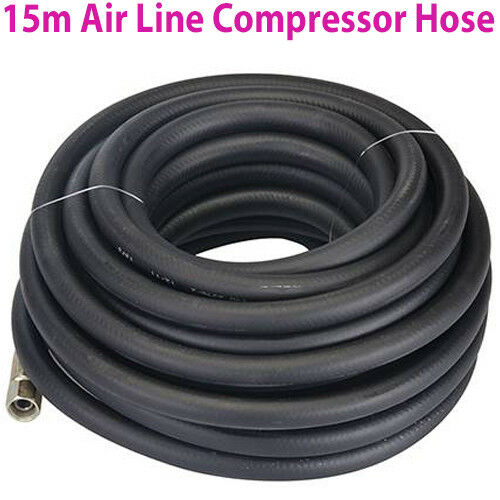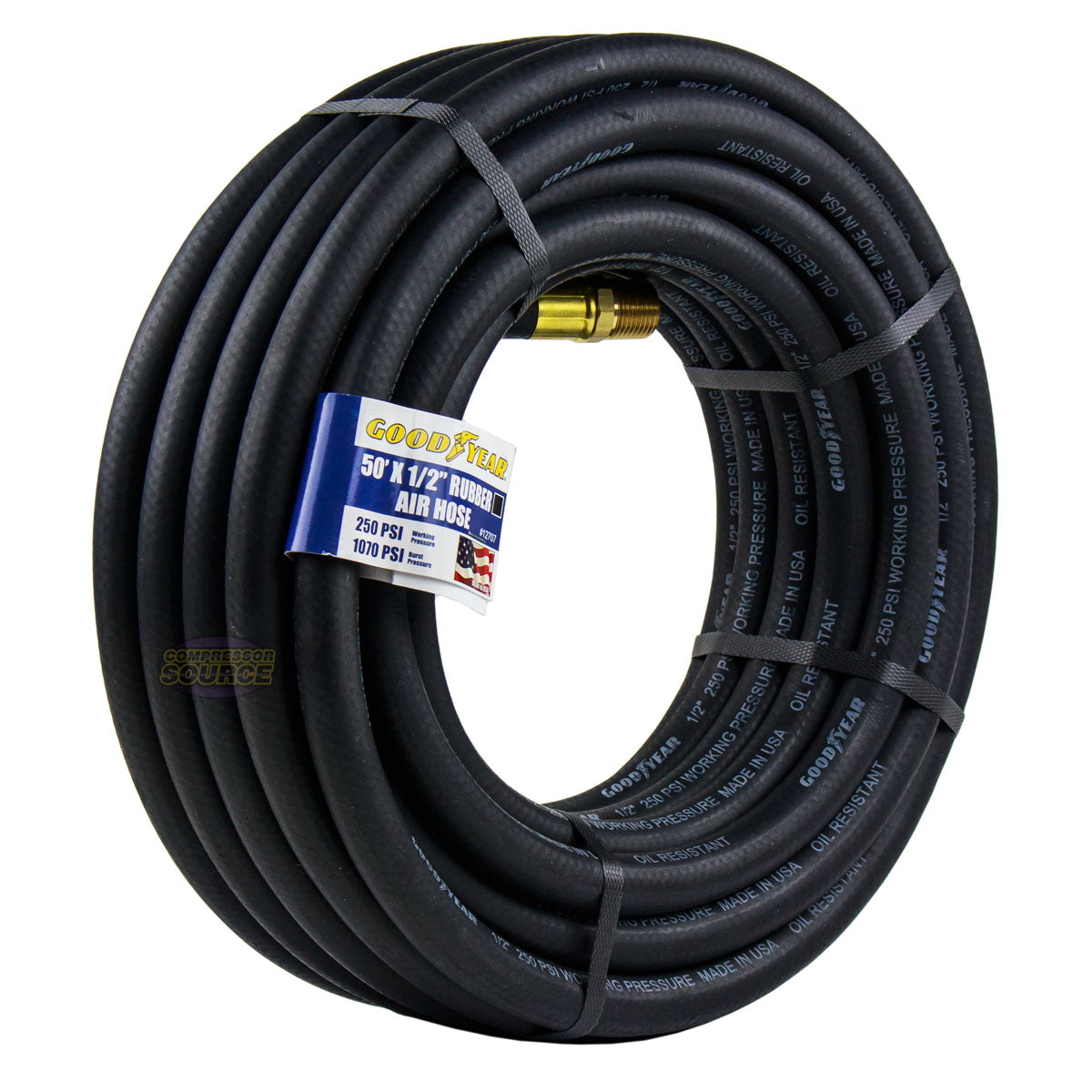When it comes to keeping your air compressor running smoothly, the right hose can make all the difference. A rubber air compressor hose offers flexibility, durability, and safety that you need for your projects.
But how do you choose the best one for your needs? You’ll discover what makes rubber hoses stand out, how they protect your equipment, and tips to get the most out of them. Keep reading to make sure your next air compressor setup is both efficient and reliable.
Benefits Of Rubber Air Compressor Hoses
Rubber air compressor hoses offer many advantages for various tasks. They are designed to handle tough jobs and provide reliable performance. Their unique features make them a preferred choice for professionals and hobbyists alike.
These hoses combine strength, flexibility, and a secure design. They ensure smooth and safe air flow during operation. Understanding their benefits helps in choosing the right hose for your compressor needs.
Durability In Harsh Conditions
Rubber air compressor hoses resist cuts, abrasions, and impacts. They withstand rough surfaces and heavy use without damage. These hoses handle extreme temperatures without cracking or weakening. This durability reduces the need for frequent replacements. It saves money and avoids work delays.
Flexibility For Easy Handling
Rubber hoses bend easily without kinking or twisting. They are lightweight and simple to coil or uncoil. This flexibility allows for smooth movement around corners and tight spaces. Users can manage hoses easily without extra effort. It improves efficiency and reduces fatigue during work.
Leak-proof Design Features
Rubber hoses have tight, secure connections that prevent leaks. They keep air pressure stable for consistent tool performance. The material resists air escape even under high pressure. This leak-proof design enhances safety and reduces energy waste. It ensures tools run at their best without interruptions.
Materials And Construction
Rubber air compressor hoses need strong materials and smart construction. They must handle high pressure and stay flexible. Good materials help the hose last longer and work safely. The way the hose is built affects its strength and flexibility. Understanding these parts helps you choose the right hose.
Types Of Rubber Used
Natural rubber offers good flexibility and wear resistance. It works well in most air compressor settings. Synthetic rubber, like nitrile or neoprene, resists oil and chemicals. These types protect the hose from damage. Some hoses mix rubbers to get the best features. The rubber type depends on the work environment.
Reinforcement Layers
Hoses need strong reinforcement inside. Layers of fabric or wire make the hose tough. Textile reinforcement keeps the hose flexible but strong. Steel wire layers add extra strength for high pressure. The right reinforcement stops the hose from bursting. It also helps keep the hose shape during use.
Protective Coatings
The outer layer protects the hose from cuts and weather. Some coatings resist heat and sunlight well. Others protect against oil, grease, and chemicals. A good coating keeps the hose safe on rough surfaces. It also makes the hose easier to clean and maintain.
Common Applications
Rubber air compressor hoses are essential tools in many settings. They connect air compressors to various devices. These hoses carry compressed air safely and efficiently. Their flexibility and durability make them ideal for many tasks. Below are some common places where rubber air compressor hoses prove useful.
Industrial Use
Factories use rubber air compressor hoses daily. They power pneumatic tools like drills and wrenches. The hoses handle high pressure and harsh conditions. They help keep machines running smoothly. Workers rely on these hoses for fast, reliable air delivery.
Automotive Workshops
Car repair shops use these hoses for many jobs. They connect air tools such as impact wrenches and paint sprayers. The hoses provide strong, steady airflow. This helps mechanics work quickly and efficiently. Rubber hoses resist oil and wear in these tough environments.
Home And Diy Projects
Many homeowners use rubber air compressor hoses too. They work well with nail guns, airbrushes, and inflators. The hoses are easy to handle and store. They offer a safe way to use compressed air at home. Perfect for small repairs and creative projects.

Credit: www.amazon.com
Choosing The Right Hose
Choosing the right rubber air compressor hose is key for safe and efficient work. The hose must match your needs for size, pressure, and tool compatibility. Picking the wrong hose can cause leaks or damage equipment. This guide helps you find the best hose for your air compressor.
Size And Length Considerations
Size matters for air flow and tool performance. Choose a hose diameter that matches your compressor and tool. Too small a hose limits air supply. Too large adds unnecessary weight and cost. Length affects reach and air pressure. Longer hoses reduce pressure at the tool. Pick a length that gives enough reach without excess slack.
Pressure Ratings
Check the hose’s maximum pressure rating. It must handle your compressor’s pressure safely. Using a hose with a low rating risks bursting or leaks. Match or exceed the compressor’s PSI rating. Safety is important. A strong hose lasts longer and protects users.
Compatibility With Tools
Ensure the hose fits your air tools. Look at the hose end fittings and connectors. Some tools need quick-connect fittings. Others use threaded connectors. Using the wrong fitting wastes time and causes leaks. Choose a hose designed for your tool types and brands.
Maintenance Tips
Proper maintenance of your rubber air compressor hose ensures it lasts longer and works well. Small steps can prevent big problems and save money. Follow these tips to keep your hose in good shape.
Regular Inspection
Check the hose often for cracks, leaks, or wear. Look at both ends and the entire length. Replace the hose if you find damage. Early spotting stops bigger failures and accidents.
Cleaning Methods
Clean the hose with a soft cloth and mild soap. Avoid harsh chemicals that can damage rubber. Rinse well with water and dry completely. Clean hoses perform better and last longer.
Storage Best Practices
Store the hose in a cool, dry place away from direct sunlight. Coil it loosely to avoid bends or kinks. Keep it off the ground to prevent dirt buildup. Proper storage maintains flexibility and strength.

Credit: loopsdirect.com
Troubleshooting Common Issues
Troubleshooting common issues with rubber air compressor hoses helps keep your tools running smoothly. Problems like leaks, kinks, and wear can stop air flow and reduce efficiency. Quick fixes save time and money.
Detecting Leaks
Leaks lower air pressure and waste energy. To find leaks, listen for hissing sounds near hose connections. You can also apply soapy water to the hose surface. Bubbles show where air escapes. Mark these spots for repair or replacement.
Handling Kinks And Twists
Kinks block air flow and damage the hose. Avoid sharp bends when storing or using the hose. Gently straighten any twists to keep air moving freely. Use hose reels or guides to prevent tangles and extend hose life.
Repair Vs Replacement
Small leaks can be fixed with patch kits or clamps. Check if the hose wall is thin or cracked. If damage is large or near fittings, replace the hose. A new hose ensures safety and steady air supply.

Credit: compressor-source.com
Frequently Asked Questions
What Is A Rubber Air Compressor Hose?
A rubber air compressor hose is a flexible tube that transports compressed air. It is durable, resistant to wear, and suitable for various industrial and home applications.
How Durable Is A Rubber Air Compressor Hose?
Rubber air compressor hoses are highly durable. They resist abrasion, weather, and chemicals, ensuring long-lasting performance in tough environments.
Can Rubber Hoses Handle High Air Pressure?
Yes, quality rubber air compressor hoses can handle high pressures. They are designed to maintain integrity under heavy-duty air compression.
What Are Common Uses For Rubber Air Compressor Hoses?
These hoses are used in automotive, construction, and manufacturing industries. They connect air tools, inflate tires, and power pneumatic equipment efficiently.
Conclusion
Rubber air compressor hoses offer strong and flexible connections. They resist wear, heat, and pressure well. Using the right hose keeps your tools safe and working. Choose hoses that fit your compressor’s needs. Regular checks help avoid leaks and damage.
Trust in quality hoses for smooth, reliable air flow. Your projects run better with the right equipment. Simple steps make a big difference in performance. Keep your work safe and efficient every day.

